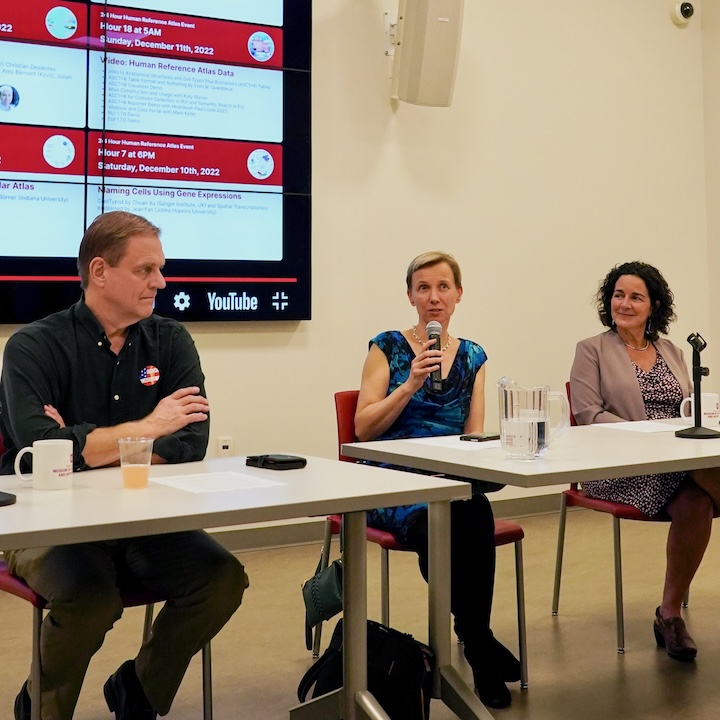
A recent screening of the award-winning Humanexus, a thought-provoking film produced by Katy Börner, Victor H. Yngve Distinguished Professor of Engineering and Information Science at the Luddy School of Informatics, Computing, and Engineering, plus panel discussions with Lisa-Marie Napoli, director of IU’s Political and Civic Engagement program, and Keith Barton, professor at the IU School of Education, moderated by Sarah Junk Hatcher, learning and community engagement manager at the Indiana University Museum of Archaeology and Anthropology, led to these questions that remain as relevant today as they were at the dawn of civilization:
Is this the future we want?
What do we want?
Can we civilly talk about it?
The civil discourse panel discussion with Börner, Napoli, Barton and Hatcher that followed the screening at the Indiana University Museum of Archaeology and Anthropology offered hope.
“We need to have these discussions so people can get together and make informed decisions that result in futures which are desirable for all of us,” Börner said.
The film, directed by artist Ying-Fang Shen, won more than 50 film awards, including third place at the prestigious Aviff Cannes Art Film Festival in France in 2014. It uses animation to visualize human communication from the Stone Age to today. It explores the evolution of communication, and how media ranging from storytelling to the Internet have shaped knowledge exchange, and it highlights the communication opportunities and risks in this ever-increasing connected world.
Börner discussed the inspiration for the film, the challenges in making it (“It’s hard to talk about communication through the ages.”) and how today’s technology, including AI, would have impacted its creation. She added that it’s “wonderful” that the film continues to be screened.
Future panel discussions as part of the museum’s mission to share the human stories behind its artifacts and the cultures that created them are planned.
Börner also addressed the challenges of communicating between different academic disciplines, cultures and communities.
“Today, there are many global challenges that require efficient interdisciplinary, inter-institutional, and inter-generational communication,” she said. “Having shared goals makes it possible to align good forces, make everyone comfortable and productive, and accomplish tasks that no team alone could complete.”
Napoli stressed civil discourse involves communicating while showing common respect for people as “we navigate tensions.” It’s a way to increase knowledge and awareness, particularly with civic issues and the community. Actions in response to problems always have pros and cons, she said, and there are no easy solutions.
“There’s a perception that we have to be directive and demanding or fully accommodating with each other to make progress in decision making, when in fact there is so much more in between those extremes that is key to consider,” she said. “The way we communicate is so vital.”
Barton said it’s often a delicate balance between maintaining relationships with people and dealing with difficult issues.
“As a society, we haven’t balanced that very well,” he said.
And yet, people have productive conversations all the time, he added, but tend to focus on the unproductive ones.
“People come together when they have common interests,” Barton said, “but it’s human nature to remember the conversations that went wrong rather than the 100 that went right.”
While advanced communication technology can’t change that, hope for civil discourse remains. Börner invited readers to watch Humanexus so that they can answer for themselves, “What do we want?”

